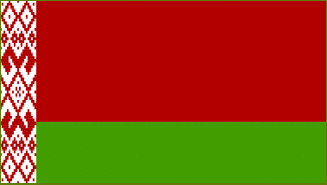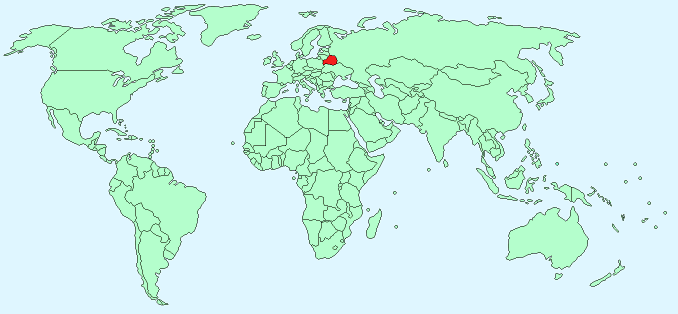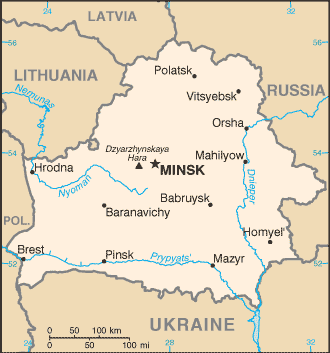Belarus


Continent – Europe
Region – Eastern Europe, non EU member
Size – 207,600 km²
Geography – Mostly flat with areas of marshland
Language – Belarusian, Russian
Religion – 80% Eastern Orthodox, 20% other
Monetary Unit – Rouble
Natural Resources – forests, peat deposits, small quantities of oil and natural gas, granite, dolomitic limestone, marl, chalk, sand, gravel, clay
Agriculture – grain, potatoes, vegetables, sugar beets, flax; beef, milk
Industry – metal-cutting machine tools, tractors, trucks, earthmovers, motorcycles, televisions, chemical fibers, fertilizer, textiles, radios, refrigerators

Neighbouring Countries – Russia, Ukraine, Poland, Lithuania, Latvia
Population – 9,608,058 (2014)
Population Growth Rate – -0.4%
Average Life Expectancy – 70
Capital City – Minsk (population 1,921,807)
Highest Mountain – No mountains – highest point Dzyarzhynskaya Hara (346 m)
Longest River – Dnieper (697 km in Belarus)
Climate – Cool, wet summers 14°C to 25°C, cold winters -10°C to 4°C
Yearly Rainfall – 76 cm approx
Plant Life – Mushroom, blackberry, raspberry, wild strawberry, herbs, pine, spruce, oak, birch, aspen, alder
Animal Life – deer, wild boar, elk, hare, beaver, wolf, fox, marten, hare, otter, ferret, ermine
Bird Life – 317 species including grebe, pelican, cormorant, egret, heron, stork, swan, Canada goose, osprey, kite, falcon, sandpiper, kittiwake, dove, owl, woodpecker
Aquatic Life – carp, pike, perch, roach, trout
Harvard Reference for this page:
Heather Y Wheeler. (2015). Belarus. Available: https://www.naturalhistoryonthenet.com/Facts_Figures/Country_Facts/belarus.htm. Last accessed Monday, July 18, 2016
Facts and Figures Pages
